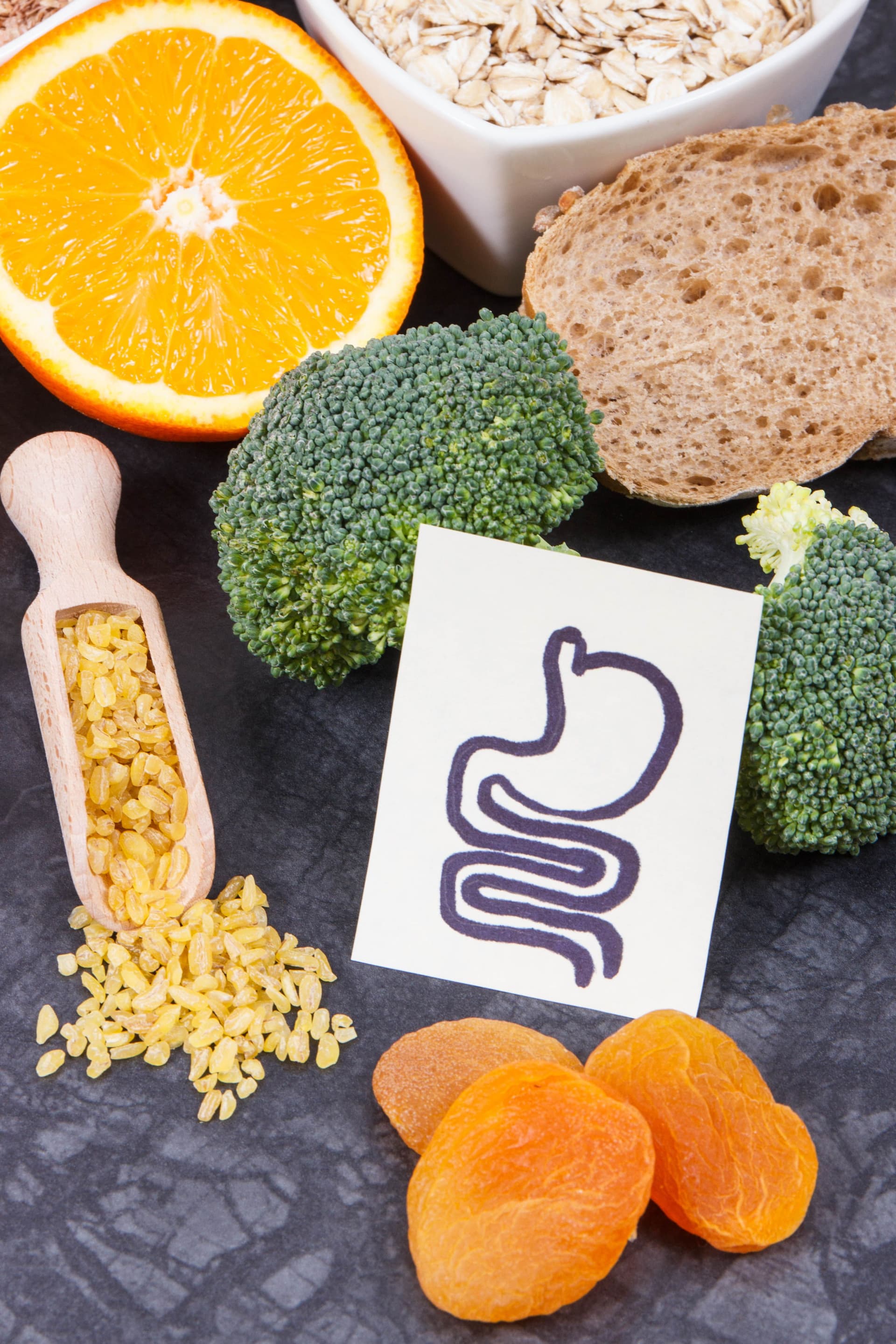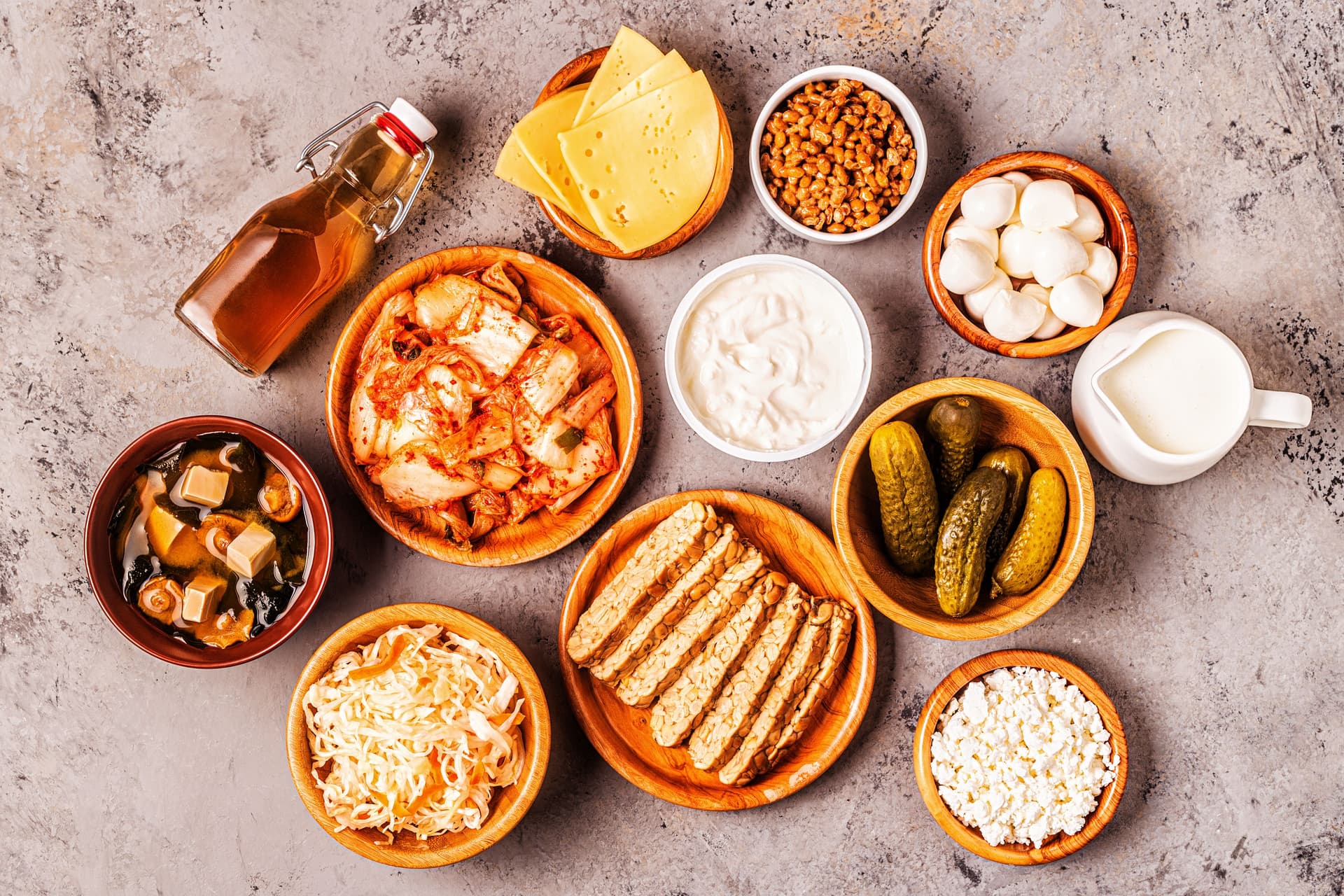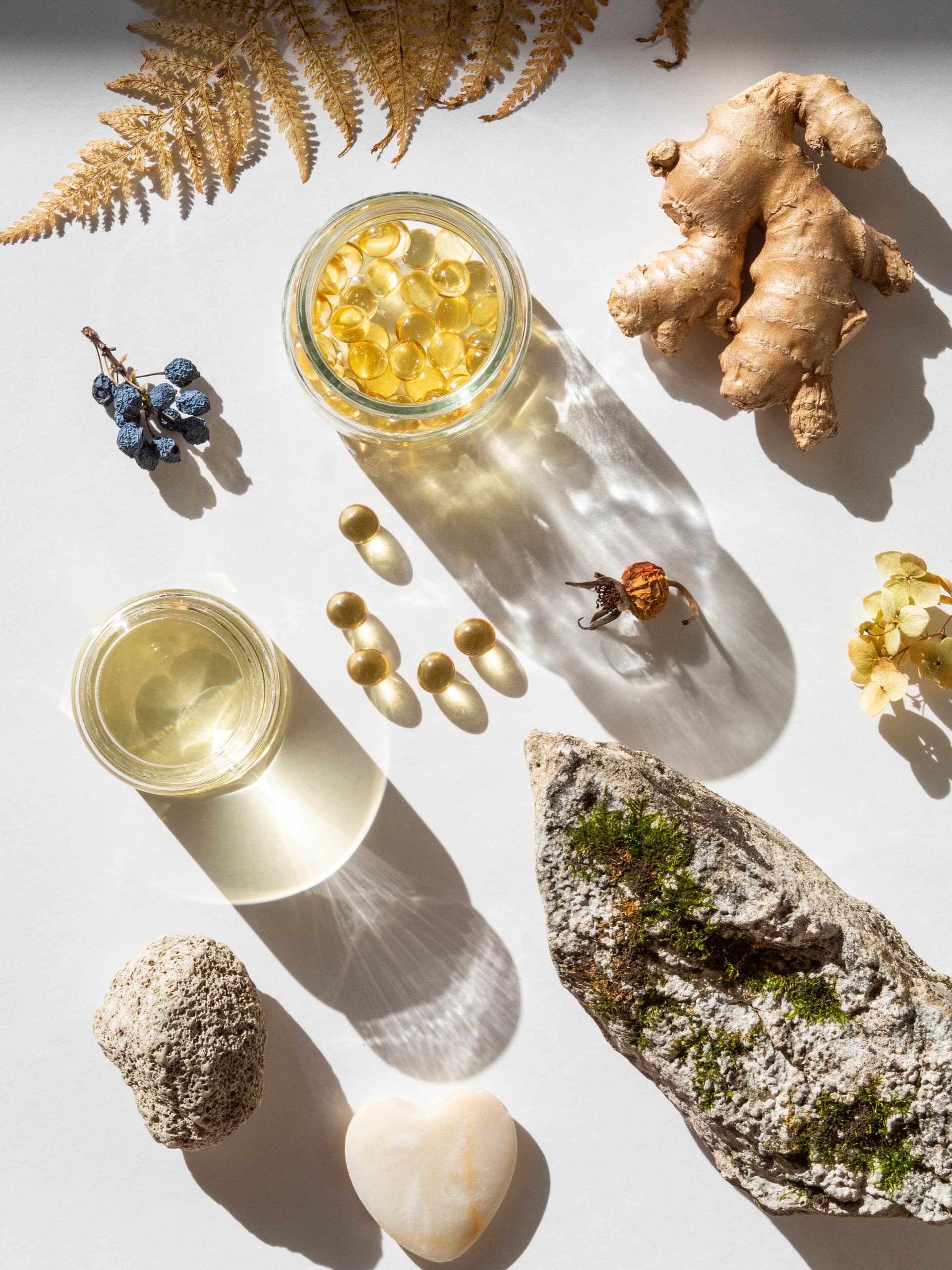Published: October 10, 2025
What if that 2 PM energy crash that hits you like a brick wall every single day isn't because you need more coffee or better sleep—but because trillions of tiny organisms living in your digestive system have been sending you SOS signals for months?
You know that feeling when you eat what's supposed to be a "healthy" salad and somehow feel more bloated than when you had pizza? Or when you spend a small fortune on probiotics that promise to fix everything, only to feel worse three weeks later? That's not your imagination—that's your gut bacteria staging a full-scale revolt.
Here's something that might blow your mind: while everyone's been obsessing over the latest superfoods and workout trends, scientists just discovered that your energy levels, mood swings, and even whether you wake up feeling refreshed are being controlled by bacteria that most people accidentally starve every single day.
We're not talking about some far-off medical breakthrough that'll be available "someday." This is happening in your digestive system right now, and you can start optimizing it today without a prescription, an expensive gym membership, or giving up your favorite comfort foods. The best part? Your body is naturally primed for this kind of reset as we move deeper into fall. Instead of fighting against October's changing rhythms, you can work with them to finally fix the energy drain that's been sabotaging everything else you're trying to accomplish.
What Actually Happens When Your Gut Bacteria Go Rogue (The Real Story Behind That Afternoon Crash)
Every morning around 6 AM, while you're still hitting snooze, there's a microscopic war happening in your intestines. The beneficial bacteria are trying to manufacture compounds that'll make you feel energized and focused all day, while the problematic bacteria are basically throwing a frat party and trashing your internal ecosystem.
When the troublemakers are winning—which they often are thanks to processed foods, chronic stress, and even antibiotics you took two years ago—everything downstream gets messed up. Your energy tanks, your mood becomes unpredictable, your skin breaks out, and even your ability to think clearly gets foggy.
This isn't just about digestion anymore. Recent research shows that gut bacteria directly influence serotonin production, with about 90% of your body's serotonin manufactured in your digestive tract. When your gut microbiome is out of balance, you're literally running on empty neurotransmitters.
But here's where most people get it completely backwards. They immediately rush to probiotics, thinking they can just dump more good bacteria into the chaos and everything will magically sort itself out. That's like trying to plant a garden in soil that's overrun with weeds and expecting the flowers to win without doing any prep work first.
The smarter approach? You've got to clear out the troublemakers before you invite the beneficial bacteria to move in. And nature has equipped us with some remarkably sophisticated tools for this exact job.

How to Clear Out Bad Gut Bacteria Naturally (Without Destroying the Good Ones)
Berberine has become the darling of gut health communities for good reason—but not for the reasons most people think. This yellow compound from plants doesn't just randomly attack all bacteria like a sledgehammer. Instead, it's surprisingly selective, going after problematic strains while leaving beneficial ones relatively alone.
Think of berberine as the world's most diplomatic bouncer. Research shows it specifically targets harmful bacteria like E. coli and Staphylococcus while actually promoting beneficial Lachnospiraceae bacteria that produce those crucial short-chain fatty acids your gut lining needs to stay healthy.
Natural antimicrobial herbs work as a comprehensive cleanup crew when used strategically. Wild oregano oil contains compounds that can handle stubborn bacterial overgrowths, black walnut targets parasites, and clove oil has been used for centuries to eliminate harmful microorganisms—each one addressing different aspects of bacterial imbalance.
The key insight that most people miss: timing matters more than dosing. Taking these antimicrobials with meals reduces stomach irritation while helping your body absorb and utilize them more effectively. The goal isn't to sterilize your gut—it's to restore the natural balance that modern life has disrupted.
What makes this approach different from pharmaceutical antibiotics is selectivity. While broad-spectrum antibiotics create a scorched-earth situation in your gut, natural antimicrobials tend to target problematic bacteria while supporting the ecosystem's overall recovery.
Best Digestive Enzymes for Bloating (And the Timing Mistake Everyone Makes)
Picture this: you're at a restaurant where the kitchen staff decides to take the night off right after you order. Your food sits there, half-prepared and getting cold while nothing happens. That's essentially what's occurring in your stomach when you don't have adequate digestive enzyme production.
Your pancreas is supposed to release exactly the right enzymes at precisely the right time to break down proteins, fats, and carbohydrates. But chronic stress, aging, and certain medications have basically given your pancreas chronic fatigue syndrome.
The enzyme most people have never heard of but desperately need is betaine HCl—hydrochloric acid that should make your stomach as acidic as battery acid. When stomach acid production drops, even nutritious food just sits there fermenting and creating the gas that makes you feel like you swallowed a balloon.
Here's where it gets interesting: different macronutrients require completely different enzyme teams. Trying to digest a steak with generic "digestive enzymes" is like trying to cut down a tree with a butter knife. You need protease for proteins, lipase for fats, and about six different enzymes just to properly break down various types of carbohydrates.
For people who struggle with gluten, prolylendoprotease can be a game-changer. Even if you don't have celiac disease, gluten can be notoriously difficult to digest completely, and this specific enzyme breaks down the exact protein fragments that tend to cause inflammation.
The timing secret that changes everything: take digestive enzymes 15-20 minutes before you eat, not during or after. Think of it as sending in the prep crew before the main event starts. This allows the enzymes to mix properly with your gastric juices and be ready to work the moment food arrives.

How to Heal Leaky Gut Fast (The Science Behind Intestinal Repair)
"Leaky gut" might sound like wellness industry marketing speak, but it's actually a legitimate condition with a proper scientific name: increased intestinal permeability. The tight junctions between your intestinal cells start acting like a broken screen door instead of a secure barrier. When this happens, partially digested food particles, bacterial fragments, and toxins slip through into your bloodstream, where they absolutely don't belong. Your immune system goes into red alert mode, treating these escaped particles as foreign invaders and launching inflammatory responses that can affect everything from your skin to your joints to your brain.
L-glutamine acts as premium fuel for your intestinal cells. When you're stressed or dealing with inflammation, these cells burn through glutamine incredibly fast. Supplementing with L-glutamine is like providing emergency building materials for gut lining repairs.
Zinc carnosine deserves special attention because it's completely different from regular zinc supplements. This chelated form actually adheres to irritated areas of your digestive tract, providing targeted anti-inflammatory protection exactly where it's needed most while delivering zinc for cellular repair processes.
The protective coating approach uses compounds that work like nature's Band-Aid system. Aloe vera, marshmallow root, and slippery elm create a soothing barrier over inflamed tissues, giving them time to heal while reducing immediate discomfort from acidic foods or digestive juices.
Here's the compound that sounds too good to be true but actually works: immunoglobulin from bovine colostrum. This provides the same protective factors that help newborn mammals develop healthy gut barriers, essentially giving your adult digestive system a second chance at proper development.
Most people see some improvement in bloating and digestive comfort within 2-3 weeks, but complete gut lining repair typically takes 8-12 weeks of consistent support. The key is maintaining steady nutrient availability rather than sporadic high doses.
Spore-Based Probiotics vs. Regular Probiotics (Why Your Expensive Pills Aren't Working)
Walking down the probiotic aisle feels like attending an auction where everyone's shouting increasingly absurd numbers. "50 billion CFUs!" "100 billion CFUs!" "200 billion CFUs!" Meanwhile, you're wondering if bigger numbers actually translate to better results, or if this is just the supplement industry's version of an arms race.
Here's the uncomfortable truth that probiotic companies don't advertise: most of those expensive capsules are essentially very costly placebos. By the time regular probiotics survive your stomach acid, navigate through your small intestine, and reach your colon, where they're supposed to establish colonies, you're lucky if 1% of them are still alive and functional.
Traditional probiotics are like hothouse flowers—they look impressive in controlled environments but can't handle real-world conditions. They need refrigeration, die from stomach acid exposure, and often can't compete with existing bacterial populations that have been established for years.
Spore-based probiotics work more like seeds with protective shells. They remain dormant through the harsh upper digestive tract conditions, then "activate" when they reach the environment where they can actually establish beneficial colonies. It's bacterial survival evolution at its finest.
The five Bacillus strains that actually make it to the finish line—coagulans, subtilis, clausii, indicus, and licheniformis—aren't random bacteria thrown together for marketing purposes. Each strain serves specific functions in rebuilding a healthy microbiome ecosystem, from producing beneficial compounds to supporting immune function. Here's why 15 billion CFUs of spore-based probiotics often delivers better results than 100+ billion CFUs of regular probiotics: it's not about the quantity you swallow; it's about what survives to do the actual work. Think quality over quantity, strategic delivery over brute force numbers.
The prebiotic component that most people completely ignore is crucial for success. Even the best probiotics need proper nutrition to thrive once they're established. Arabinogalactans and specific plant fibers act like fertilizer for beneficial bacteria, helping them multiply and produce the compounds that support your health.

Why October Is Perfect for Gut Health (Science-Backed Seasonal Advantages)
Your digestive system isn't just passively processing whatever you eat—it's actually synchronized with seasonal rhythms in ways that create unique optimization opportunities. Right now, as daylight hours shorten and temperatures cool, your gut bacteria are naturally shifting their activity patterns.
Research shows that gut microbiome composition follows circadian rhythms controlled by light exposure, meal timing, and temperature changes. Fall creates windows where certain interventions become more effective because your bacterial populations are already in flux.
The bacterial housekeeping that happens during autumn months is fascinating from a biological perspective. As daylight decreases, bacteria that thrive on quick sugars and processed foods naturally become less dominant, while species that prefer complex carbohydrates and fiber gain ground. Your microbiome wants to prepare for a season of more substantial, warming foods.
Fall harvest produce contains specific compounds that support this bacterial transition beautifully. The high pectin content in apples feeds beneficial bacteria strains that produce short-chain fatty acids—compounds that reduce inflammation and support gut barrier function. Winter squashes provide the kind of prebiotic fiber that helps establish stable, long-term bacterial populations.
Temperature changes actually work in your favor for gut health optimization. Cooler weather naturally slows down the growth of many harmful bacteria while supporting the slower-growing beneficial species that contribute to long-term digestive wellness. This gives you a seasonal advantage when trying to rebalance your microbiome.
The timing couldn't be more perfect for another reason: you have a solid window before holiday stress and dietary chaos begin. This allows enough time for meaningful gut health improvements to take hold and create resilience before you need it most.
What to Eat for Better Gut Health (Beyond Basic Fermented Foods)
Everyone knows they should eat yogurt and sauerkraut for gut health, but if that were sufficient, digestive problems wouldn't be affecting nearly 70 million Americans. The reality is both more interesting and more achievable than most people think.
The 30-different-plant-foods-per-week rule sounds overwhelming until you realize that herbs and spices count toward that total. Your morning smoothie with spinach, banana, berries, and a dash of cinnamon? You're already at four different plant compounds before 9 AM, each one feeding different bacterial strains.
Polyphenol-rich foods act like superfoods for your beneficial bacteria. Dark chocolate, green tea, pomegranates, and blueberries contain compounds that specific bacteria can transform into anti-inflammatory metabolites. It's like having a natural pharmaceutical factory in your intestines, but powered by food instead of synthetic drugs.
The prebiotic foods that deserve more attention include Jerusalem artichokes, jicama, and slightly green bananas. These contain resistant starch and specific fiber types that feed beneficial bacteria without providing fuel for problematic strains. It's targeted nutrition for your microbiome.
Fermented foods work best when they're varied and genuinely alive. That means unpasteurized sauerkraut rather than the shelf-stable versions, live-culture kimchi instead of the heat-treated products, and rotating between different fermented options to introduce various beneficial bacterial strains.
The timing strategy that amplifies everything: eating prebiotic-rich foods and fermented foods together provides both the beneficial bacteria and their preferred fuel sources simultaneously. It's like offering both seeds and fertilizer for your internal garden.
Your 8-Week Gut Transformation Protocol (What Actually Works in Real Life)
Forget complicated meal plans and expensive testing panels that leave you more confused than when you started. This protocol focuses on the four phases that create the biggest impact with the least disruption to your actual daily routine.
Weeks 1-2: Clear Out the Troublemakers Start with natural antimicrobials to reduce harmful bacterial overgrowth. This includes berberine (500 mg twice daily with meals), oregano oil in enteric-coated capsules, or comprehensive herbal blends containing black walnut and clove. Take these with food to minimize stomach irritation. Don't panic if you feel slightly off during this phase—that's normal as problematic bacteria die off.
Weeks 3-4: Replace What's Missing Add comprehensive digestive enzymes 15 minutes before meals. Look for formulas containing betaine HCl for stomach acid support, protease for protein breakdown, lipase for fat digestion, and specific enzymes for gluten and dairy if those foods are part of your diet. People who've had their gallbladder removed should include ox bile extract for proper fat emulsification.
Weeks 5-6: Repair the Damage Focus on healing your gut lining with L-glutamine (5-10 g daily on an empty stomach), zinc carnosine for targeted anti-inflammatory protection, and soothing compounds like aloe vera or marshmallow root. This is also when you eliminate obvious irritants and add anti-inflammatory foods while your gut lining rebuilds.
Weeks 7-8: Replenish with Strategic Probiotics Introduce spore-based probiotics (around 15 billion CFUs daily) along with prebiotic foods to feed them properly. The spore-based approach is crucial because these strains can actually establish themselves even in a previously disrupted microbiome environment.
The lifestyle factors that make or break your progress aren't negotiable: consistent meal timing helps regulate digestive enzyme production, stress management (even five minutes of deep breathing daily helps), adequate sleep for gut barrier repair, and staying properly hydrated for optimal mucus production.
How to know it's working: Look for consistent energy levels throughout the day, reduced bloating after meals, improved sleep quality, and better stress resilience. Weight changes might happen, but focus on how you feel rather than just scale numbers.

How Long Does It Take to Fix Gut Health (Real Timelines, Not Marketing Hype)
Let's have an honest conversation about expectations, because social media is full of "I transformed my gut in one week!" posts that set everyone up for disappointment. Your digestive system didn't develop problems overnight, and it's not going to completely reset over a long weekend.
Weeks 1-2: The "Am I doing this right?" phase You might feel slightly better, slightly worse, or exactly the same. This is completely normal and doesn't indicate whether the protocol is working. Your gut bacteria populations are like a neighborhood that's been established for years—change takes time, and there's often initial resistance.
Weeks 3-4: The "Oh, something's happening" phase This is typically when people first notice their energy becoming more stable throughout the day. That 3 PM energy crash might be less severe, or you might realize you haven't reached for your usual afternoon coffee. Digestive comfort often starts improving subtly.
Weeks 6-8: The "Wait, this might actually be working" phase Digestive improvements usually become noticeable by this point. Foods that used to cause bloating or discomfort might start agreeing with you again. Sleep quality often improves as gut-brain communication stabilizes.
Months 3-6: The "I forgot I used to feel terrible" phase This is when the deeper systemic changes happen—better stress resilience, clearer skin, more predictable mood patterns, and improved immune function. These benefits reflect the gut-brain-immune system connections starting to work optimally again.
**The realistic truth about setbacks: **You'll probably have some days that feel like steps backward, especially during stressful periods, travel, or if you need antibiotics for an infection. This doesn't mean you're failing or that the approach isn't working—it means you're human and your gut health exists within real life.
What actually speeds up the process: Consistency beats perfection every single time. Following your gut support protocol 80% of the time while maintaining a reasonably diverse diet will get you better long-term results than being "perfect" for two weeks and then completely giving up.
The maintenance reality that nobody talks about: Once you've rebuilt a healthier gut microbiome, maintaining it becomes much easier than creating it in the first place. But it's not a "fix it and forget it" situation—your gut bacteria need ongoing support through diet diversity, stress management, and occasional probiotic cycling.
The Real Reason Most Gut Health Approaches Fail (And How to Avoid These Mistakes)
Here's something the supplement industry doesn't want you to understand: throwing probiotics at an unhealthy gut microbiome is like trying to plant a vegetable garden in soil that's completely overrun with weeds. The beneficial newcomers simply can't compete with established problematic bacteria, so you end up with expensive urine and unchanged symptoms.
The sequence matters more than individual product quality. You can't skip the antimicrobial cleanup phase and expect rebuilding to work effectively. You can't ignore digestive enzyme support and expect nutrients to be properly absorbed. And you definitely can't heal gut lining damage while continuing to consume inflammatory foods that caused the problem originally.
Most people quit right before breakthrough happens. The initial 2-3 weeks often feel uncomfortable as your microbiome rebalances and clears out bacterial die-off products. This temporary discomfort isn't a sign that the approach isn't working—it's frequently evidence that it is working and your system is detoxifying.
The "more is better" trap derails almost everyone. Taking massive doses of probiotics doesn't accelerate the timeline—it often slows progress by overwhelming your digestive system. Gut bacterial populations change gradually over weeks and months, and trying to force rapid changes usually backfires with increased bloating and digestive upset.
Ignoring root causes guarantees long-term failure. If you're chronically stressed, not getting restorative sleep, or eating a diet that feeds harmful bacteria while starving beneficial ones, no amount of supplements will create lasting improvement. The supplements support the healing process, but lifestyle factors drive it.
The people who succeed long-term treat gut health optimization like building fitness rather than taking medicine. They understand it's an ongoing relationship with their microbiome rather than a temporary fix, and they build sustainable habits that support bacterial diversity and digestive function for years, not just weeks.

Your Next Steps (Starting Today, Not Monday)
Your gut bacteria are changing every single day based on what you eat, how you sleep, and how you manage stress. This means every day presents an opportunity to support beneficial bacteria, and today is just as powerful as any arbitrarily chosen "perfect" starting date. ** Start with the one change that feels most manageable right now.** If comprehensive antimicrobial herbs seem overwhelming, begin by adding digestive enzymes before your largest meal. If supplements feel like too much, focus on eating 30 different plant foods this week. The most effective protocol is the one you'll actually follow consistently.
Track your energy levels and digestive comfort rather than obsessing over weight changes. Use a simple 1-10 scale to rate how you feel after meals, your afternoon energy levels, and your sleep quality. These measurements will show meaningful progress weeks before you notice changes in other areas.
Commit to the full 8-week timeline before evaluating results. Your gut microbiome took years to reach its current state, and meaningful change requires patience. Most people who think they "failed" at gut health improvement actually stopped right before the breakthrough period. Remember that 80% consistency beats 100% perfection followed by complete abandonment. Following your gut health protocol most of the time while maintaining a reasonably diverse diet will deliver significantly better long-term results than being flawless for two weeks and then giving up entirely.
Your gut bacteria have been working around the clock to support your health, often without much assistance from modern lifestyle factors. The energy, mental clarity, and overall sense of well-being you've been searching for isn't hidden in some complex biohacking protocol—it's waiting in the sophisticated ecosystem that's been inside you all along.
The conversation between your gut microbiome and every other system in your body never stops. October gives you the perfect opportunity to make sure they're finally saying good things about each other.
References:
- https://pubmed.ncbi.nlm.nih.gov/38130410/
- https://pmc.ncbi.nlm.nih.gov/articles/PMC11435404/
- https://pmc.ncbi.nlm.nih.gov/articles/PMC12361499/
- https://pmc.ncbi.nlm.nih.gov/articles/PMC10112787/
- https://pmc.ncbi.nlm.nih.gov/articles/PMC5641835/
- https://my.clevelandclinic.org/health/diseases/22724-leaky-gut-syndrome
- https://www.nuvancehealth.org/health-tips-and-news/fall-in-love-with-these-seasonal-foods-for-digestive-health
- https://pmc.ncbi.nlm.nih.gov/articles/PMC9918080/
- https://www.healthline.com/health/digestive-health/3-day-gut-reset
- https://pmc.ncbi.nlm.nih.gov/articles/PMC10435753/
- https://pmc.ncbi.nlm.nih.gov/articles/PMC6835969/
- https://healthpath.com/gut-health/how-to-treat-sibo-naturally-without-antibiotics/


